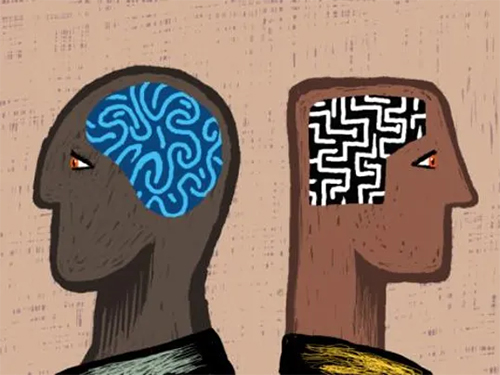By Linda Karanzalis
“Neurotypical” describes an individual with normal neurological development. “Neurodivergent” describes people with brain-based conditions like attention-deficit/hyperactivity disorder (ADHD), nonverbal learning disorder (NVLD), autism spectrum disorder (ASD), and learning disabilities that can make it hard for them to understand what neurotypicals are communicating.
Since most neurotypicals have little to no understanding, awareness, or experience interacting with those who are neurodivergent, they often chalk up their communication styles and behaviors as rudeness or defects in character. Some of these behaviors include but are not limited to:
- poor eye contact
- interrupting
- inappropriate laughter
- speaking too loudly
- literal interpretation of words
- repetitive questions
- invasion of personal space
- blunt comments
- tactless jokes
- rigid thoughts or behaviors
- repetitive questions
Many times the blame is wrongly placed on the parents for supposedly failing to teach manners and spoiling their children in their younger years.
Chances you’ve experienced the frustration of communicating with a neurodivergent person unknowingly, as typically there are no outward visible signs to indicate otherwise. Had you known, you most likely would have sought to understand the individual better and attempted to communicate in a manner that was more accommodating.
In an ideal world, both neurodivergent and neurotypical individuals would be able to coexist in a way that respects and accommodates their differences. In reality, our society expects neurodiverse individuals to alter their behaviors to conform to the norm. In order to try to fit into a socially acceptable mold and hide neurodiverse traits, many resort to “masking.”
At its best, masking is a coping mechanism used to “pass” as neurotypical to navigate social situations better and avoid negative social consequences like rejection and bullying. Masking can involve a range of behaviors, such as consciously imitating the behaviors and mannerisms of neurotypicals, suppressing stimming (repetitive movements or sounds that can be calming or self-soothing for some neurodivergent individuals), hiding one’s sensory sensitivities or difficulties, and suppressing what comes naturally to them if they can to appear as so-called “normal.”
However, masking can backfire on neurodiverse individuals who don’t understand the meaning of the words, behaviors, and feelings they are mimicking to fit in. It‘s mentally exhausting and increases feelings of loneliness, depression, and anxiety.
While neurodivergent individuals typically struggle in environments that are traditionally designed for neurotypicals, it’s important to recognize that neurodiversity is not a problem that needs to be fixed. Rather, it’s accepting and respecting natural brain variations that are to be celebrated and accommodated. Be respectful and open-minded. Avoid making assumptions or judgments about the person’s behavior or communication style.
The following are some strategies that can be used to bridge the gap between neurotypical and neurodiverse individuals:
- Use straightforward language.
Avoid metaphors, idioms, and sarcasm. Be mindful that not everyone understands nonverbal communication (body language, tone of voice, facial expressions, and gestures).
- Be patient.
Give more time as some need than others to process information.
- Be aware of sensory stimuli, such as bright lights, loud noises, or strong smells.
This can be overwhelming for some who need to communicate in a calm and quiet environment.
- Check-in.
Frequently check with the person to ensure they understand what you are saying by asking them for clarification.
- Ask for feedback.
Ask how you can improve communication.
More awareness is needed so that we can be understanding and be empathetic toward those facing challenges. We can create a more harmonious and inclusive world that supports and values everyone.
Linda Karanzalis, Board-Certified Cognitive Specialist is the author of Misnamed, Misdiagnosed, Misunderstood, a new book on Nonverbal Learning Disorder and other brain-based challenges. www.lindakaranzalis.com.










